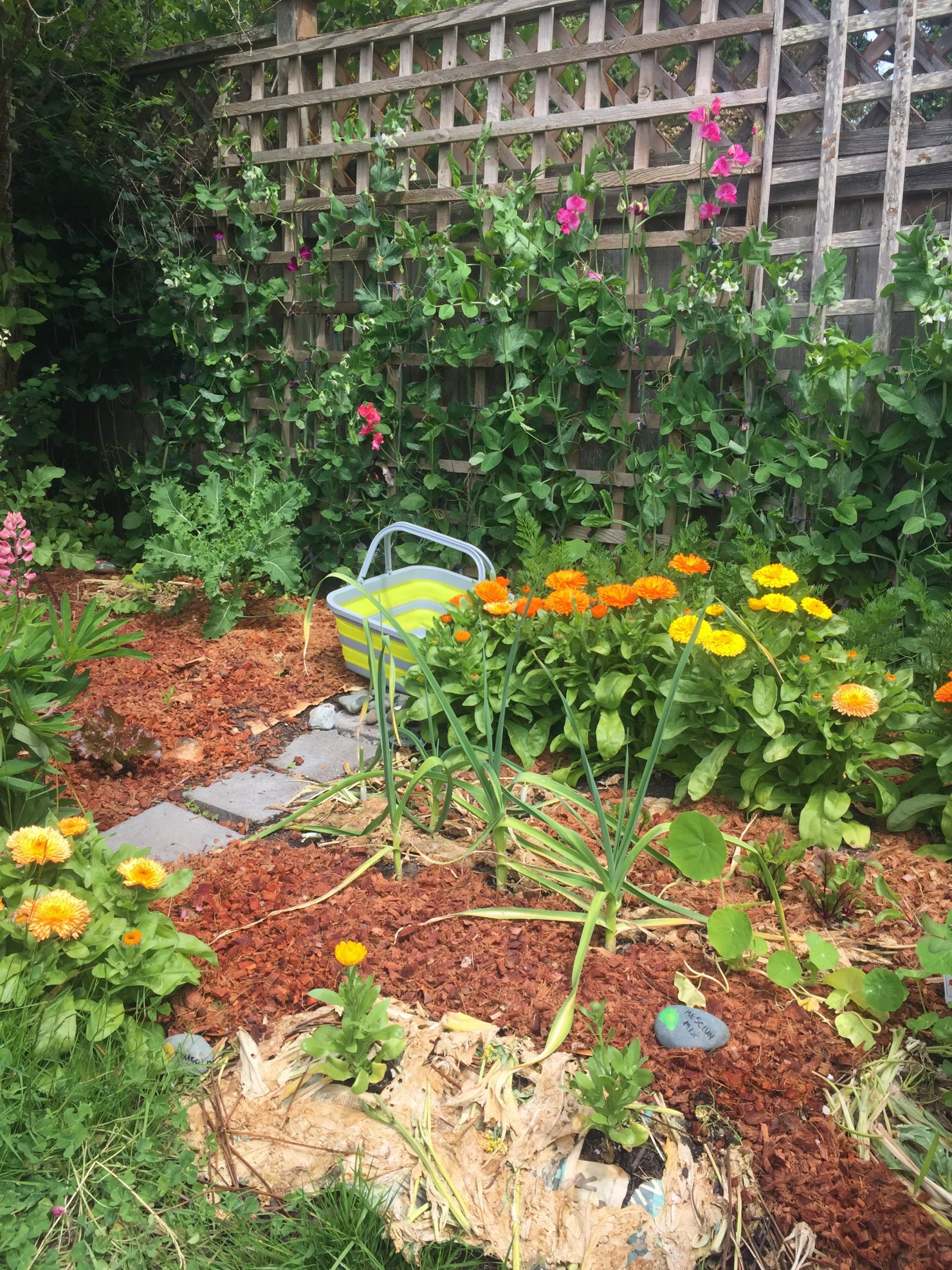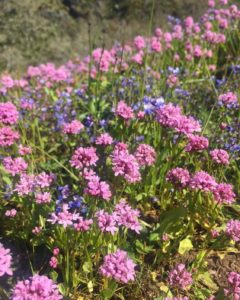When tending your garden, you’re not simply growing plants – you’re fostering an ecosystem. The seeds you sow wouldn’t be able to thrive without the support of an entire network of soil organisms, whose incalculable and unimaginably complex functions include facilitating nutrient cycling, fighting pests and disease, and building soil structure. Your garden’s health is therefore directly related to the health of the soil and the microbial community within it. To improve the well-being of your plants, it is therefore paramount to tend not solely to them but also to the life that supports them.
For a quick refresher on the signs of healthy soil, check out my last post. In essence, you want your soil to be alive, teeming with bacteria, fungi, protists, viruses, and insects, and full of dark organic matter. By creating habitat for these organisms and fostering microbial diversity, you’ll be able to enjoy a more resilient garden – drought tolerant, disease and pest resistant, higher-yielding, and better-tasting.
The best way to approach soil health (and maybe to approach life in general) is to emulate nature. A lot of information is out there about regenerative cultivation, but much of it pertains to commercial cultivation rather than home gardening. I’ve taken the liberty of adapting these ideas to a smaller scale.
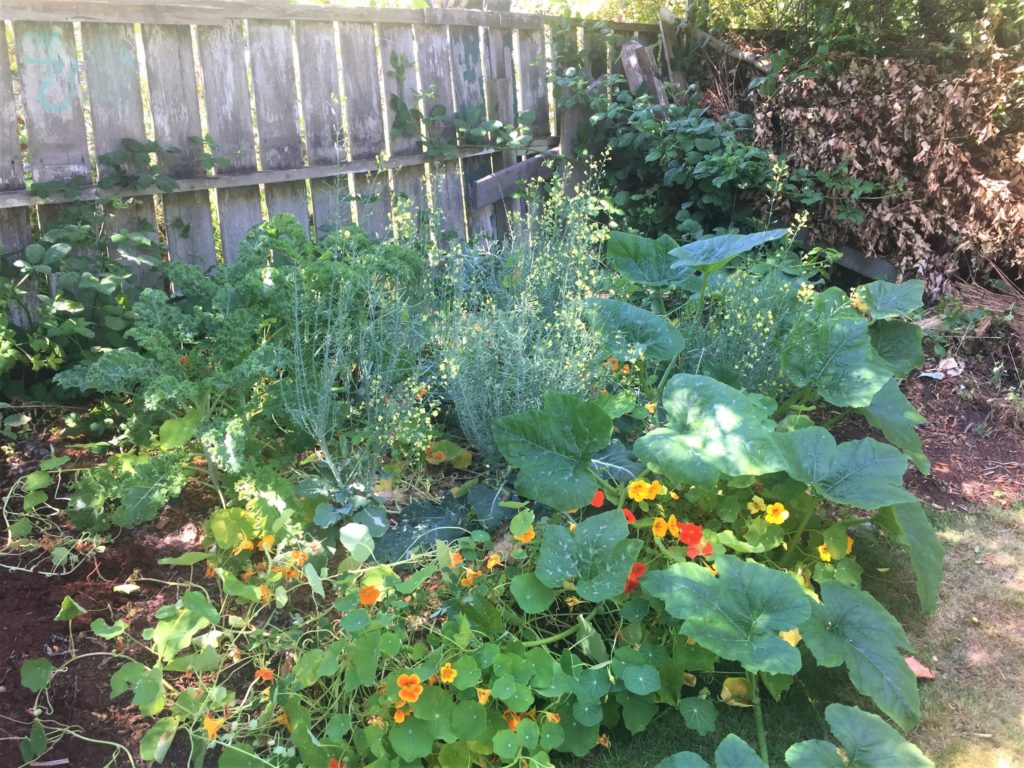
Here are some tips for creating healthy soil in your own garden:
Cover your soil.
How often do you see big patches of bare soil out in nature? Not often, I bet (even deserts have biocrust!) In the winter, when many plants die back, the ground tends to be covered in leaves and other organic material. This doesn’t tend to be the case in conventional agriculture, though practices are starting to change. The common belief used to be that leaving fields fallow (i.e., unplanted) gave them a break to recover and restore nutrients. This premise fails to acknowledge the reciprocal relationships and ecosystem that exists between soil organisms and crops.
Exposed soil leaves it vulnerable to the elements. Sun exposure dries the soil out and creates a crust, which in turn reduces water infiltration capacity, accelerates water evaporation, and increases soil temperature fluctuations. Without protection, soil also erodes due to wind and water runoff, the latter which also leaches nutrients and alters the water bodies into which it runs. Soil microbes, which are most active within the top 60 cm of soil, also lack habitat and stability in these conditions. Keeping soil covered mitigates these affects while also suppressing weed growth, building nutrients, increasing organic matter, and providing food and shelter for soil organisms, thereby improving soil structure.
There are a few different ways to keep your soil covered. Mulch, such as leaf mulch, straw, grass clippings, or wood chips, works beautifully. This year, one of my beds was under a deciduous tree so I didn’t even have to worry about mulching it. Mother Nature took the reins on that one!
You can also apply green mulch using the “chop and drop” method. Simply chop down a plant and drop it in pieces on the soil. This is a commonly used technique in permaculture, where gardeners grow fast-growing, large-leaved plants such as comfrey and burdock for this purpose. Nitrogen-fixers and plants with deep tap roots help add necessary nutrients to the soil. Each plant species has its own nutritional composition, so it can be advantageous to add a variety of cuttings. I also chop and drop with dead plants, particularly in this past year as I didn’t have a compost pile.
If mulch isn’t your thing, try growing cover crops. You can grow cover crops whenever you have an empty bit of ground, which usually occurs over winter and between spring and summer plantings. What you choose to grow will depend on what you hope to achieve and what season it is. For instance, you might want to plant Austrian winter peas over winter to fix nitrogen and enjoy some delicious pea shoots. In spring or summer, you may want to consider growing radishes to help mitigate soil compaction if that’s a problem in your garden. Whatever route you choose, your soil will thank you!
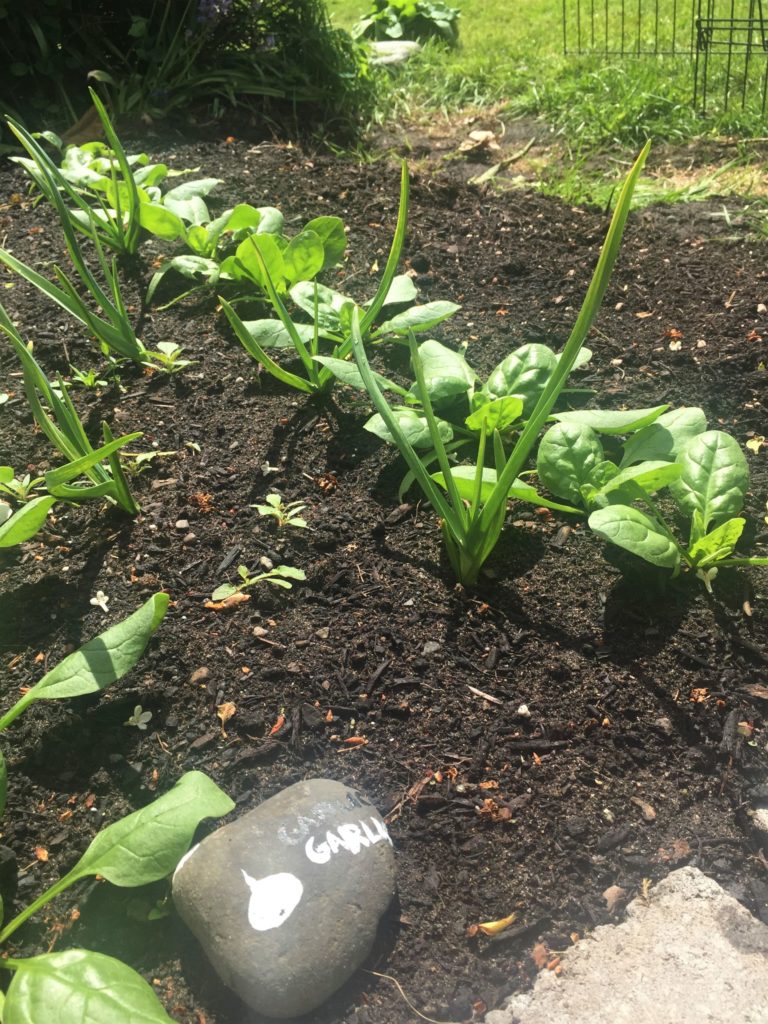
Rotate your crops.
Crop rotation involves growing plants from different families on the same piece of land in successive seasons or years. Plants have varying nutrient requirements, and growing one type of plant in the same spot year after year can result in nutrient depletion. These requirements tend to be the same across a family of plants; for example, Brassicas (which include broccoli, cauliflower, Brussel sprouts, cabbage, kale, kohlrabi, and collard greens – by the way, did you know that these are cultivars of the same plant species?) are heavy feeders, meaning they require a lot of nutrients. It would be wise to plant a soil-enriching crop like a nitrogen-fixing legume (e.g. peas, beans, or lentils) before growing heavy feeders so that the soil is primed and nutrient-rich. The heavy feeder could then be followed by a light feeder crop such as carrots or onions. Another common crop rotation is to go from legumes to alliums (e.g. garlic, onions, or shallots) to roots and tubers (e.g. beets, carrots, or potatoes) then to Brassicas.
One other advantage of crop rotation is avoiding the proliferation of diseases and pests. Without the return of a host crop, soil-dwelling pathogens will eventually become non-viable, at which point that crop can once again be grown in that location. Pathogen viability varies – onion leaf blight can last for two years, while white rot, which affects alliums, can last for 20 to 30 years.
Give your plants companions.
Does anything in nature ever grow in a monoculture? No. A functional ecosystem features a multitude of flora and fauna existing in relationship to each other, and so should your garden. You may have heard about interplanting, where you mix different varieties together to save space and reduce nutrient and sun competition. You may have even taken it up a notch with companion planting, where the varieties you mix benefit each other by providing shade, deterring insects, or attracting pollinators. Both strategies are useful and fun to experiment with. If you’d like a quick companion planting reference, I like to use West Coast Seed’s guide. This year, if I have the time to plan it all out, I hope to establish my new garden using more sophisticated forms of polyculture as described in my permaculture bible Gaia’s Garden. This approach is designed to mimic natural succession and include more diverse ecological niches than in a traditional garden. While it takes more planning, the result is a low-maintenance, multi-season, high-yielding, diverse, and ecologically beneficial Garden of Eden.
Add organic matter.
The quest for healthy soil is just a never-ending mission to build soil organic matter (SOM). SOM has a huge influence on the biological, chemical, and physical properties of soil. I’ll save the soil science for another post, but some of the benefits of SOM include:
- Increased microbial diversity and activity
- Increased soil aggregation
- Increased soil nutrients
- Increased water holding capacity
Build SOM by adding compost to your garden. You can buy bags of compost from most garden centres, but homemade stuff will be more beneficial. The process of making your own compost is super easy but warrants its own post. For now, check out the Compost Education Centre’s brilliant fact sheets or workshops for a primer. You can also add aged manure to your soil. Soil microbial communities play a big role in building SOM, so keeping them healthy is key to a happy garden.
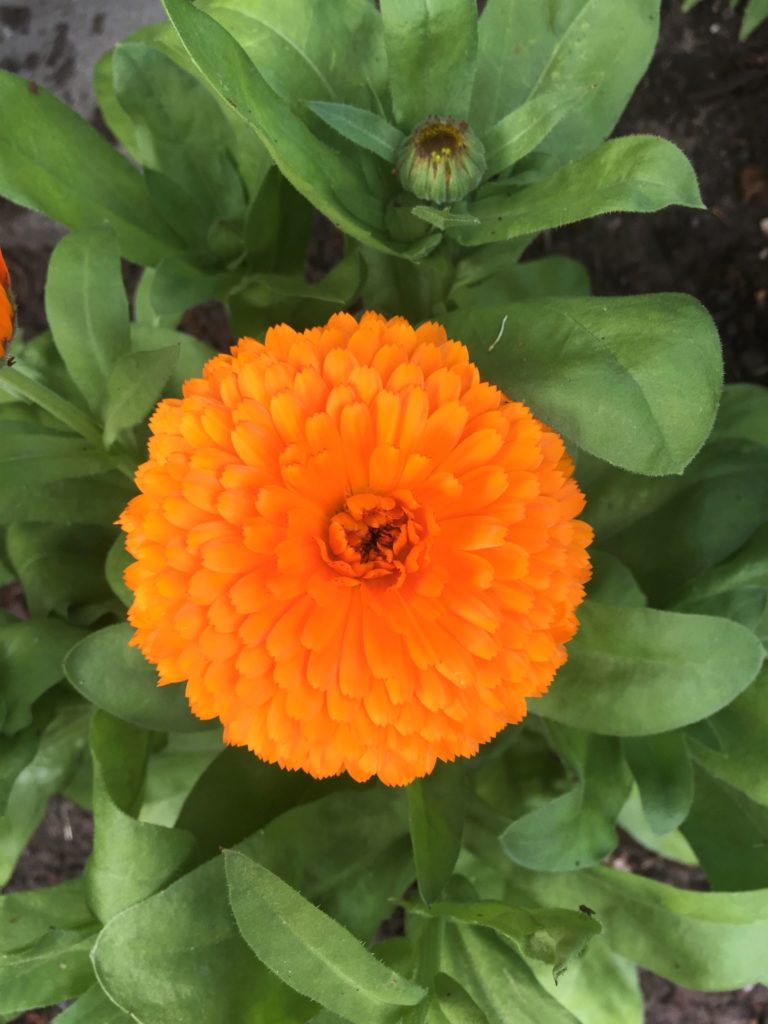
Minimise soil disturbance.
Tillage is the practice of mechanically manipulating soil by digging, stirring, and turning it. It is used to control weeds and pests, incorporate soil amendments such as fertilizer and lime, and prepare beds for seeding by loosening, shaping, warming, and aerating the soil. The invention of the plow revolutionised agriculture by enabling increased crop production with decreased labour, but it has also led to widespread soil degradation. Tilling your garden seems to result in a spike in productivity thanks to the increased oxygen reaching soil microbes, which sends them into overdrive breaking down organic matter and cycling minerals as the soil is broken into smaller aggregates. This quick release of nutrients leads to amazing plant growth, and the surplus nutrients are carried away by water runoff. The same thing happens year after year, with the initial burst of fertility eventually turning into depletion. Soil structure and mycorrhizae are also destroyed during tillage, and soil microbial communities shift to reflect the depleted conditions and frequent disturbance.
Conventional agricultural practices try to make up for this decrease in fertility with synthetic agrochemicals, but the environmental degradation associated with these practices is becoming increasingly problematic. In your own garden, focus on long-term soil fertility by incorporating the tenets I have listed here rather than tilling. If weeds get out of control, you want to start a new bed, or you feel the need for a fresh start, try sheet mulching. This technique is easy, cheap, and sets you up for long-term success.
Avoid chemical usage.
Agrochemicals such as pesticides, herbicides, and fungicides, and synthetic fertilizers have led to widespread environmental damage and negative health repercussions for human and non-human beings. They are toxic to soil organisms and provide temporary fixes to symptoms of larger mismanagement problems. By taking an ecosystem approach to gardening and fostering organism health, problems related to pests, diseases, and even weeds should be minimal. Seek out alternative inputs if needed. Feed your garden with compost tea and research organic alternatives to agrochemicals instead of panicking and reaching for the glyphosate. The Organic Gardener’s Pantry has some excellent fertilizers and microbial inoculants to start you off.

Avoid compaction.
An important component that we don’t generally consider is pore space, the space between solid soil particles that is taken up by water and air. Believe it or not, this pore space comprises around 50% of most soils. Soil compaction occurs when solid soil particles are pressed together, which reduces pore space and thus lowers water infiltration rate and capacity, crop nutrient absorption and water uptake, root penetration, and crop yield. Soil organisms also need to breathe and move through the soil, so microbial populations tend to shift toward smaller organisms and more anaerobic activity. While compaction is a much bigger problem when heavy farm machinery is involved, it is advisable to minimise your garden bed stomping.
Create habitat.
Creepy crawlies like little nooks and crannies. Decorate your garden with some cool hunks of wood, rocks, and whatever else you might find. Dead wood is great fodder for mycelium and an amazing water reservoir. The more ecological niches you can create in your garden, the more organisms you’ll have, the happier your ecosystem will be, and the hipper and artsier your garden will look.
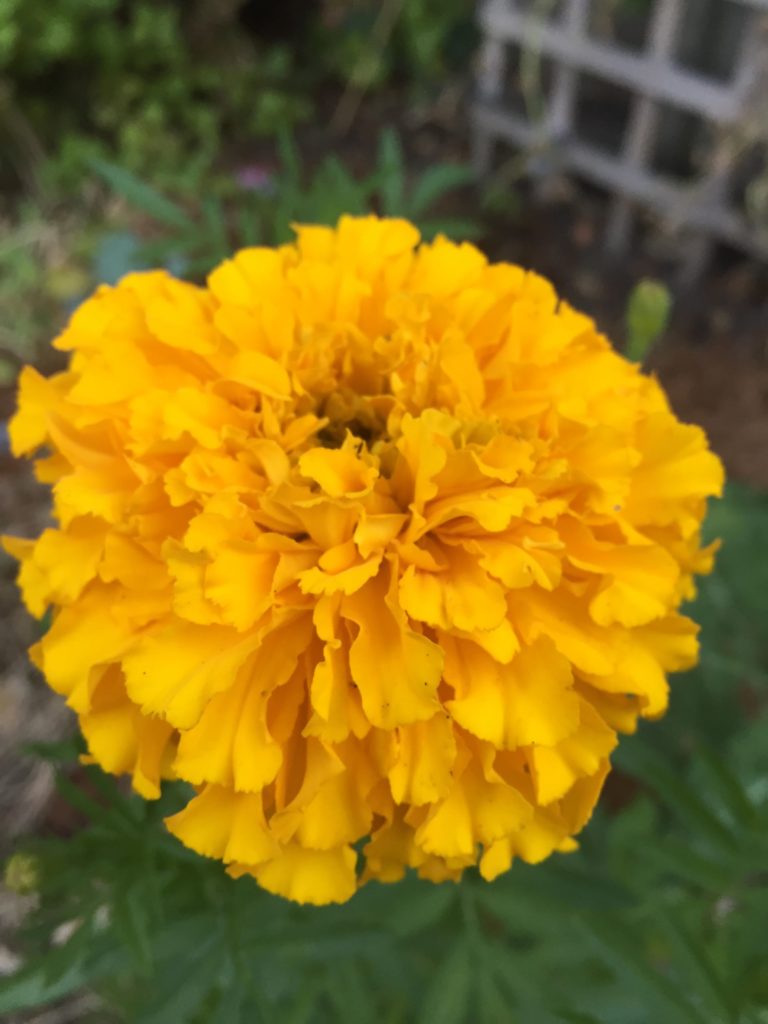
Hopefully you feel inspired to look at your garden a different way. You are not just growing plants; you are cultivating a complex community of flora and fauna. If you’d like to do some more reading related to this, here are a few suggestions.
Dirt to soil: One family’s journey into regenerative agriculture – Gabe Brown
A rancher who pivoted to farming regeneratively and cultivating soil health to great success.
Microbia: A journey into the unseen world around you – Eugenia Bone
A palatable exploration into the world of microbes, with exciting examinations of the soil and human microbiomes.
Growing a revolution: Bringing our soil back to life – David R. Montgomery
A discussion of farming for soil health with a focus on conservation agriculture. This one has a nice global scope.
Whitewash: The story of a weed killer, cancer, and the corruption of science – Carey Gillam
The story of glyphosate. Soon to be complemented by Gillam’s new work The Monsanto papers: Deadly secrets, corporate corruption, and one man’s search for justice.
